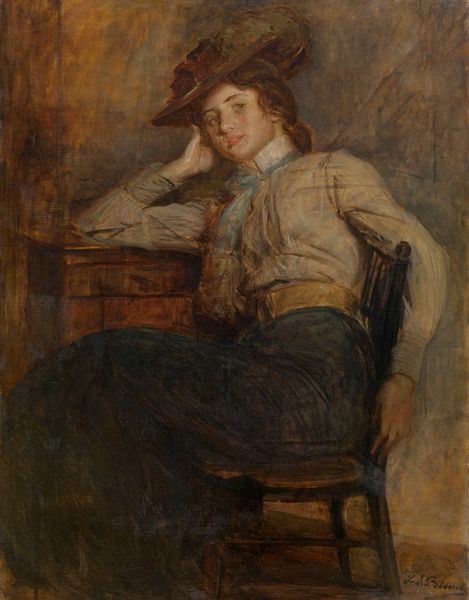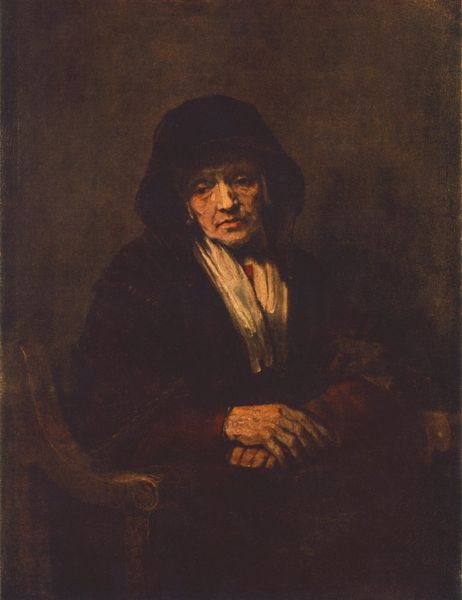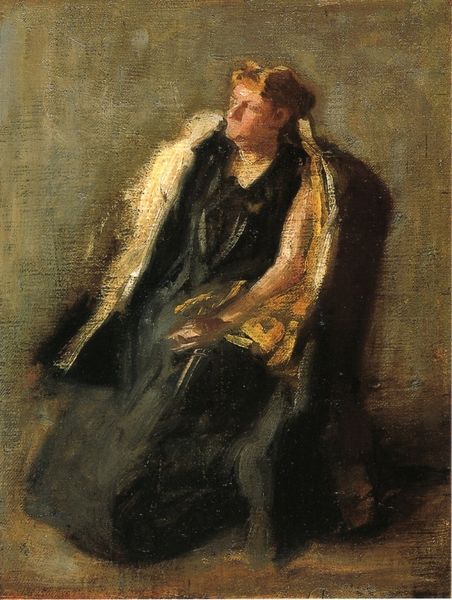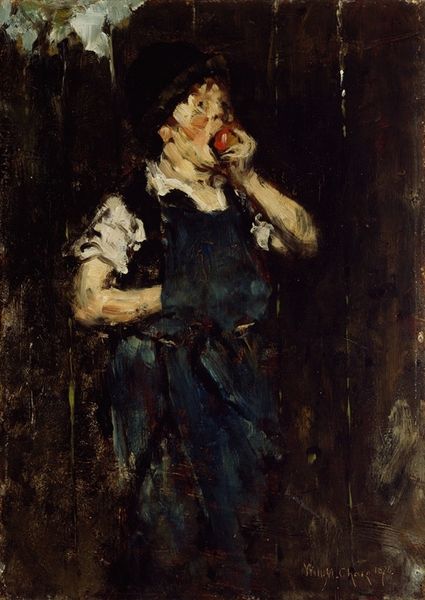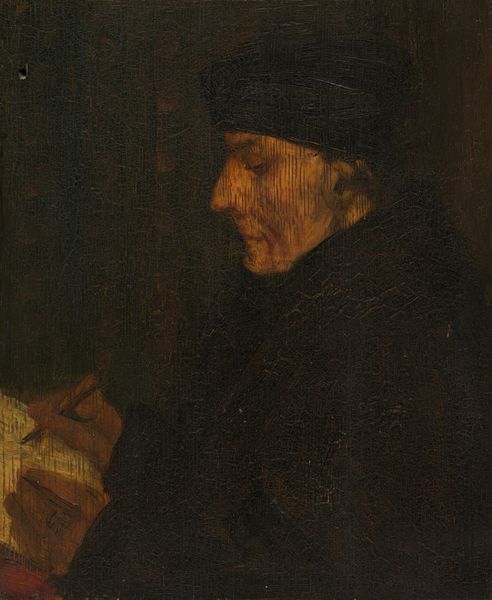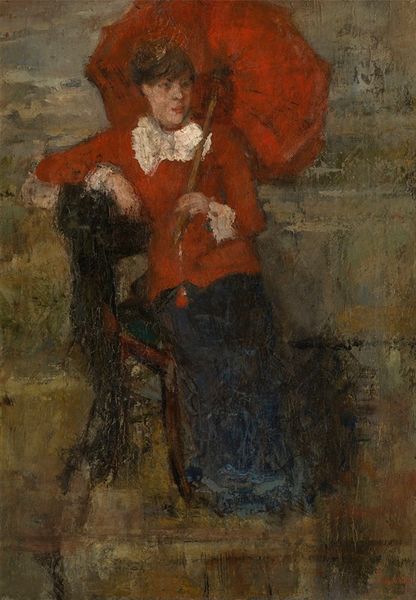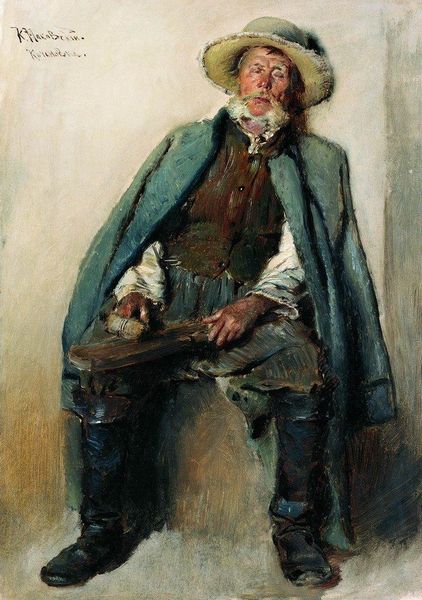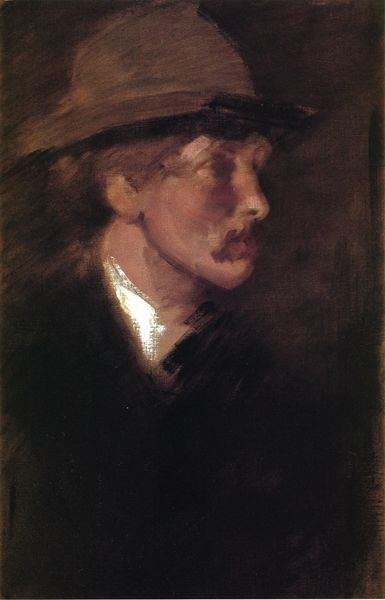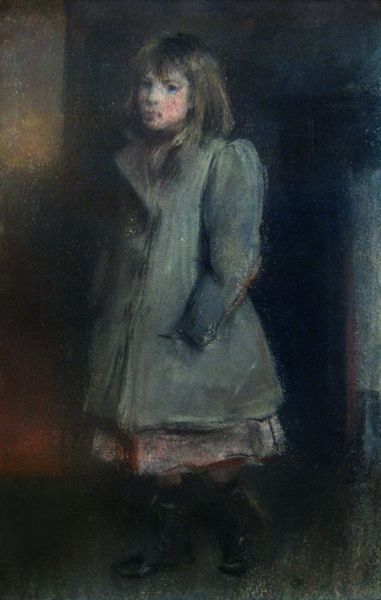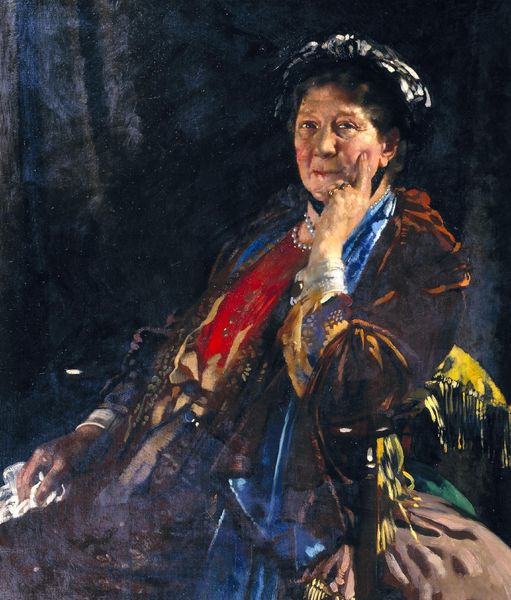
painting, oil-paint
#
portrait
#
figurative
#
painting
#
impressionism
#
oil-paint
#
charcoal drawing
#
oil painting
#
genre-painting
#
expressionist
#
realism
Copyright: Public Domain: Artvee
Curator: Jozef Israëls, a Dutch painter from the 19th century, captured in oil on canvas a study titled "Der Trinker"—The Drinker. It is undated, though the artist’s signature style allows us to place it within his mature period. My immediate impression is one of somber introspection, the murky palette enveloping the figure in what feels like profound isolation. Editor: The composition is compelling; see how Israëls masterfully utilizes light to sculpt the figure out of near darkness. Notice the contrast between the luminous face and the shadowed background – the source light seems placed just above his line of sight. It casts an odd glow to illuminate what looks like a humble scene. Curator: Observe the props Israëls uses to amplify the emotional resonance: the nearly empty bottle in the drinker's hand, the partially filled glass on the table. These are powerful symbols, signifying loss and the fleeting illusion of solace. And yes, this interplay creates an atmosphere thick with meaning—loss and perhaps also fleeting pleasure, depending on one’s reading. This iconography would likely trigger the intended emotional connection for the Dutch observers. Editor: And speaking of craft: the impasto, particularly in the figure’s face, draws attention to his features. There is a profound melancholy embedded in this man’s posture. The brushstrokes almost seem to quiver with sadness and even defeat. What strikes me is how that specific effect of light accentuates this psychological weight—it isn’t only the narrative details but the formal elements, the artist's technique that moves us so profoundly. Curator: Precisely! These images tap into collective understandings about moral failings, which serve to reinforce values by showing a counterpoint. Think about the larger cultural context and the warnings against the dangers of alcohol. In his expressionistic distortion of light, he amplifies the deeper human element of despair beyond cautionary narrative. Editor: Indeed. Viewing the artist’s strategic use of tone, how it emphasizes both form and subject simultaneously makes the effect all the more powerful and moving. I leave having seen Israëls’ skillful weaving of form, symbol, and, yes, feeling. Curator: Yes, a compelling convergence that resonates through time, as potent and resonant today as, no doubt, it was back then.
Comments
No comments
Be the first to comment and join the conversation on the ultimate creative platform.
